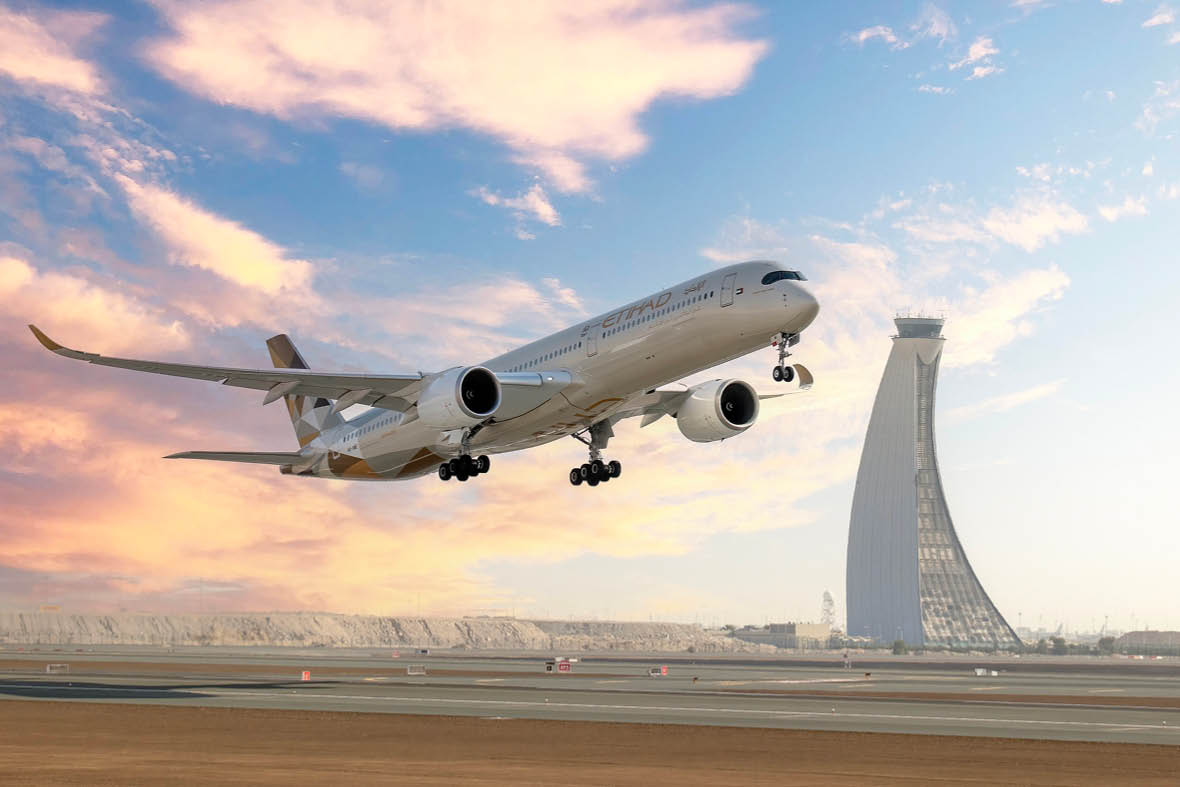Abu Dhabi Airport’s newly opened Terminal A comes on stream just as hub carrier Etihad Airways plans significant expansion
As publicity stunts go, Abu Dhabi Airports pulled off a major coup last year when its new terminal played a starring role in the latest Mission Impossible Hollywood blockbuster.
For many, this was their first sight of the airport’s sweeping new Midfield Terminal, called Terminal A, with Tom Cruise featured sprinting across the building’s 315-metre-tall roof in a dramatic action sequence.
Unsurprisingly, the filming of the scenes at Terminal A took place before its official opening to passenger traffic in mid-November, as the operation required 21 days of preparation, seven days of filming production, and involved 762 cast, crew and suppliers.
Today Terminal A is in full swing and has begun a new era for aviation in Abu Dhabi. All 28 airlines at the airport are now operating with close to 2.5 million passengers expected in December across 12,220 flights.
It has been a long wait for Terminal A. Construction first began in 2012, but stalled somewhat as home base carrier Etihad Airways downsized and went through a business transformation to restore profitability from 2017. Etihad is now back on a growth trajectory, making access to the new terminal extremely timely.
When the construction masterplan is completed, Terminal A will accommodate 45 million people, handle 79 aircraft simultaneously and process 11,000 passengers per hour and will “strengthen Abu Dhabi’s reputation as a destination of choice and a global hub for trade and business”, said the airport.
“Bringing new state-of-the-art facilities and a major increase in aviation capacity, Terminal A will greatly enhance the passenger experience, whilst enabling international airlines to further increase their presence in Abu Dhabi,” said Elena Sorlini, Managing Director and Interim CEO at Abu Dhabi Airports.
Etihad’s new journey
Speaking at the Dubai Airshow in November and marking the 20th anniversary of the formation of Etihad Airways, the carrier’s CEO Antonoaldo Neves outlined its ambitious growth plan for the next seven years: Journey 2030.
This strategy, supported by the airline’s shareholder, ADQ [the Abu Dhabi-based investment and holding company mandated to accelerate the transformation of the Emirate into a knowledge-based economy], signifies a pivotal turning point in Etihad’s journey, setting the stage for a future marked by sustainable growth and enhanced customer experiences, with a significant economic contribution to Abu Dhabi, said the carrier.
“Etihad has solidified its global presence and successfully navigated challenges. Now, with strong shareholder support and a strategic plan in place, the airline is poised for sustainable, profitable growth,” said Neves.
During 2023 Etihad carried 13 million passengers, a 30% increase from 2022.
Through Journey 2030, this growth trajectory is set to continue, projecting a return to Etihad’s peak 2017 passenger numbers by late 2024 or early 2025, culminating in a target of 33 million passengers by 2030.
Under Journey 2030, Etihad’s network will extend to over 125 destinations, leveraging its strategic geographical advantage connecting Asia and Europe.
Simultaneously, the fleet will double to over 160 aircraft, focusing on connecting short- and medium-haul destinations in the Gulf Cooperations Council, India and Asia with long-haul destinations in Europe and North America.
“The opening of our new home airport Terminal A is a perfect springboard for our growth and will provide the capacity and the quality we need to cater for our guests,” added Neves.
In 2023 Etihad added 12 new destinations, with further new routes in India as well as Boston (its fourth destination in the US) and Nairobi planned to start in March 2024.



